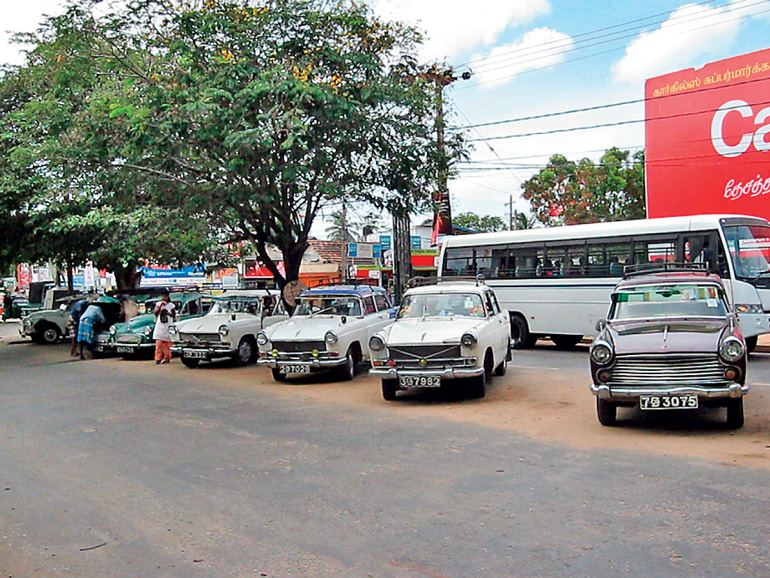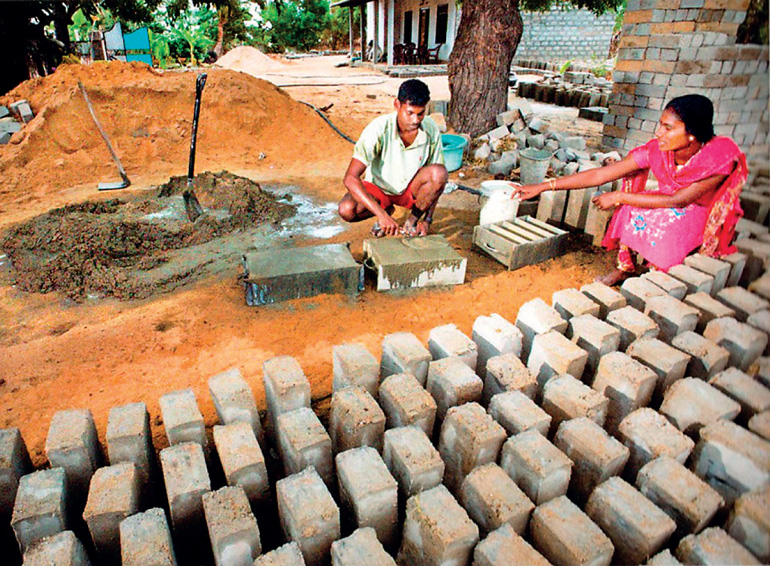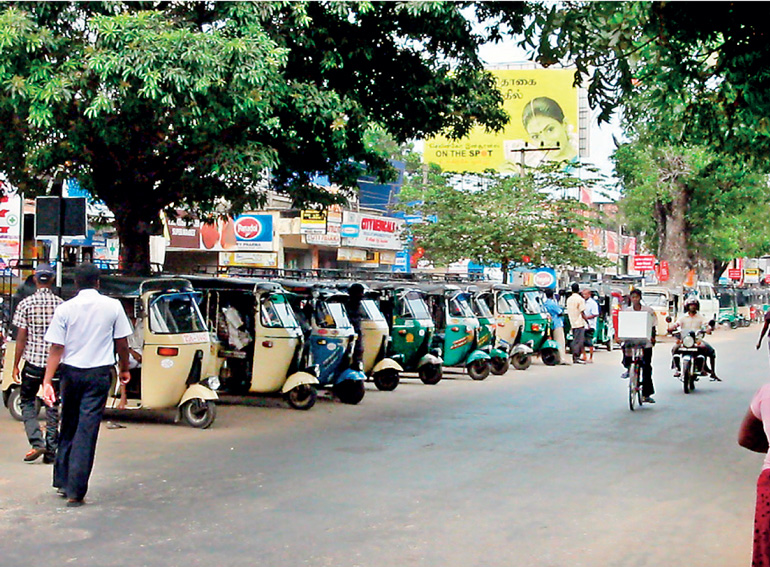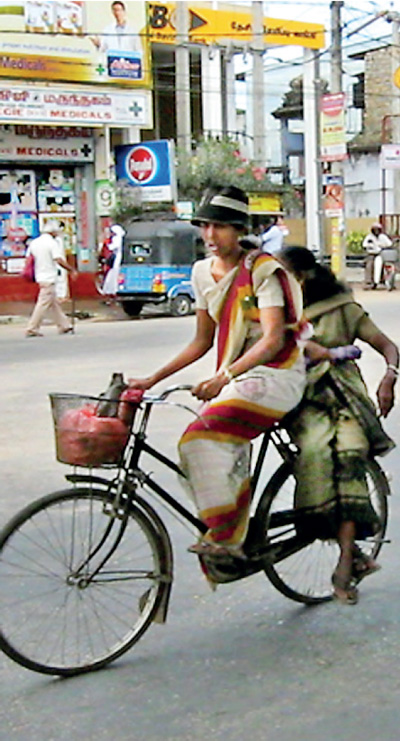Sunday Dec 14, 2025
Sunday Dec 14, 2025
Saturday, 11 June 2016 00:09 - - {{hitsCtrl.values.hits}}

Austin and Morris cars continue to be the most popular ones in Jaffna

A new class of entrepreneurs

Three wheelers galore

By D.C. Ranatunga
The Government intends to develop Jaffna as a modern city protecting its historical value, a news report said.
Since the end of the war seven years ago, Jaffna has been one of the most visited places in Sri Lanka – both by the locals and tourists from abroad. There has been so much talk about the LTTE operations in the north for over two decades, many were curious to go and see the remnants of ‘Tiger doings’ and the disaster caused by them.
Of particular interest was Prabhakaran’s barracks. The Buddhist pilgrims were, of course, keen to go to Nagadipa which they had not been able to do for so many years. They spent hours for the ferry to take them across.
Five years ago – in mid-2011 – I was in Jaffna while on an assignment to do a coffee table book to mark Sampath Bank’s 25th anniversary. We had a crowded programme within a limited period of time and we concentrated mainly on recording how Sampath Bank was helping in the recovery programme in Jaffna. It was interesting to find how, within a space of just two years after the war ended, young entrepreneurs were active in trying out new projects in a bid to start a fresh leaf of life.
Young entrepreneurs
We met Ranjini, an enterprising female who, with her husband had started making cement blocks with money from Sampath under the bank’s programme of promoting micro finance projects. They had their own plot of land where they were in the process of building a house. She was confident of completing the house from the earnings of the business while paying back the bank loan.
They had barely enough furniture for the two of them. They were concentrating more on how the business could bring them a fair return. In fact, within a few months they had invested in a small lorry to transport the finished product to the nearby town. While she handles the production of blocks with the help of an assistant, the husband delivers them in the vehicle. They were quite happy about the progress made in the first few months.
We visited several small growers who were busy cultivating their own land. They were growing numerous crops, including vegetables, bananas, red onions and gram. The more enterprising ones were trying their hand at growing grapes. Lush bunches were a common sight in most small-scale farms. Walking into the market we could see the results of the hardworking farmers. The stalls were full of various products. Meanwhile, products were beginning to move out to the others parts of the country.
‘Top gear’
I remember going to Jaffna in late 1969 – virtually 50 years ago. I was then with Lever Brothers – as Unilever in Colombo was then known – on a market visit with my colleague Russel Aluvihare, Propaganda Manager. He used to visit Jaffna regularly taking an Air Ceylon flight from Ratmalana. Once he landed in Jaffna, he had an ‘unofficial taxi’ to take him round during his stay.
Austin and Morris were the two most popular brands of cars there. I can’t even remember seeing any other cars. Russel’s driver had an Austin A40 – a fairly old model but well maintained. Russel has alerted me that the driver was very proud of how he had maintained the car over several years and asked me to watch carefully how he demonstrates to prove his point.
We were driving through a busy street in the Jaffna town and the car was being driven at a very slow speed. “See sir, how I am still going on the top gear,” the driver told us proudly. He was correct – the long floor-board gear was on ‘top gear’! Obviously he thought that it meant that he was taking good care of the car and didn’t believe in changing from top to the third gear, as he should have done.
Austin and Morris cars continue to be the most popular ones in Jaffna, as we noticed during the recent visit. Austin Cambridge – the last model that came to Sri Lanka many years ago (early ‘Sri’ series), and the ‘ever-green’ Morris Minor with (EL and EN number plates) could be seen parked at strategic points waiting for hires. The external look of the cars was very good. Of course, trishaws are aplenty.
The most used ‘vehicle’ seemed to be the bicycle. The scene early morning was a parade of bicycles where children rode them or either the mother or the father took them to school. Females getting about riding bicycles are a common scene.
Investment in jewellery
Jaffna-folks are famous for their investment in jewellery. With all the harassment the average people had undergone under LTTE domination, they had somehow protected their jewellery. With peace they got plenty of opportunities to use the jewellery and obtain funds to start businesses. Pawning is thus big business for the banks. At the time we were there, most of them used the money they got from the bank to build a shelter for themselves since dwellings had been seriously affected during the war. Either they had abandoned the houses and gone to more secure places or the houses had been destroyed.
Although the jewellery was pawned, they ensured that they were redeemed. With at least one member of a family being abroad, they got money sent regularly. When they got sufficient funds they redeemed the jewellery.
At the time we went, the A9 highway was being built. Now that it’s completed movement between Jaffna and other parts of the country has become much faster. Transport of goods is much easier. Rail transport is also an asset. More facilities mean an improvement of the economy. The construction of houses for the homeless has begun. And once the city is developed Jaffna, will take its due place as the Northern Province capital.